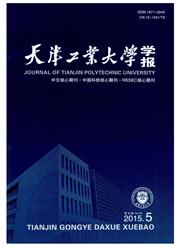

 中文摘要:
中文摘要:
通过化学改性的方法对PVDF进行改性。将丙烯酸、甲基丙烯磺酸钠以及烯丙基磺酸钠分别接枝于PVDF链上,通过红外光谱确认在膜表面有以上接枝物的存在:讨论3种不同接枝物对于膜面电阻的影响以及对钒离子吸附浓度的影响.实验结果表明:接枝丙烯酸对于降低膜面电阻作用不大.但可以极大改善PVDF膜的亲水性,有利于进而接枝亲水性以及导电性很强的甲基丙烯磺酸钠以及烯丙基磺酸钠;在接枝率相近的情况下接枝甲基丙烯磺酸钠的膜面电阻要稍低于接枝烯丙基磺酸钠的膜:当化学改性条件和置换反应时间适当时膜面电阻值可以从原始膜的5.7×10^5Ω·cm^2降到120Ω·cm^2;膜在钒溶液中的平衡吸附实验表明接枝膜具有良好的阻钒性能.有可能应用于全钒液流电池.
 英文摘要:
英文摘要:
Acrylic acid, sodium methyl allylsulfonate and sodium allylsulfonate are grafted onto PVDF membrane by chemical modification method. The existence of sulfonate and carboxylic groups on the grafted membrane are confirmed by infrared spectroscopy analysis. The effect of grafting yield of three monomers on electric resistance of membrane surface and permeability of vanadium ions is investigated. The experimental results indicate that, despite a small increase in electric resistance of membrane surface, the grafting of acrylic acid significantly enhances the overall hydrophilicity of the PVDF membrane and it is proved invaluable for the subsequent grafting of chemicals with sulfonate groups; with a similar grafting yield, the surface electric resistance of membrane grafted with sodium methyl allylsulfonate is higher than that grafted with sodium allylsulfonate. The surface electric resistance of grafted membrane can decrease to 120 Ω·cm^2 from 5.7×10^5 Ω·cm^2 of original membrane in suitable modification conditions and displacement reaction time. These membranes show very promising results in the absorption experiment and might be used in all vanadium flow redox battery(VRB).
 同期刊论文项目
同期刊论文项目
 同项目期刊论文
同项目期刊论文
 A Group Contribution-Based Model to Predict Organic Solvent Diffusivities in Amorphous Rubbery Polym
A Group Contribution-Based Model to Predict Organic Solvent Diffusivities in Amorphous Rubbery Polym Modified predicted diffusion coefficient model for polymer-solvent systems using an equation-of-stat
Modified predicted diffusion coefficient model for polymer-solvent systems using an equation-of-stat Stability and Selectivity of Supported Liquid Membranes with Ionic Liquids for the Separation of Org
Stability and Selectivity of Supported Liquid Membranes with Ionic Liquids for the Separation of Org 期刊信息
期刊信息
